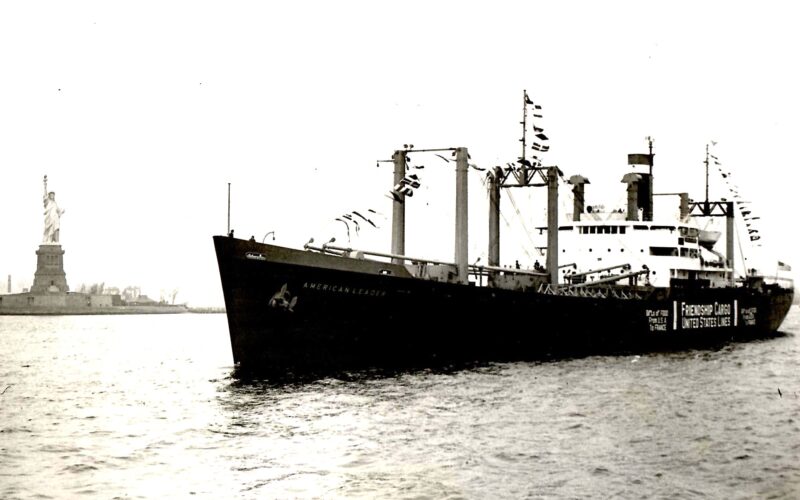
A few years before the U.S. entry into World War II, the U.S. Maritime Commission selected a design for a new freighter that had the size, capacity, and speed readily adaptable to the most varied types of cargo “from refrigerated freight and banjos to gasoline and steel sheets,” according to one Commission document.
Known as the C-2 class, the type had several variations primarily based on propulsion – diesel or steam- and proved to be among the most efficient and economical vessels of its type in the world. Many operated in commercial service into the early 1970s with several converted into first-generation containerships.
Each of the 10,332-ton ships measured 459 feet in length, had five cargo holds, a top speed of 16 knots, a crew of 46, and accommodations for 12 passengers.
One of the primary operators of C-2s was the now defunct United States Lines, which operated them in the transatlantic trade between New York and ports in Northern Europe.
In the years following the end of the war, efforts were made to relieve the suffering of the people of war-ravaged Europe. Basic necessities such as food were scarce and in 1947, in the months preceding the Marshall Plan, the people of the U.S. collected several thousand tons of relief supplies and sent them to New York City aboard several “Friendship Trains.”
In all, some 800 railroad cars filled with food from as far away as Hawaii, Alaska and California were sent eastward with stops made in scores of small towns across the country to load even more relief supplies.
In all aspects of the train’s cross-country travel, no money was ever spent – the food, the transportation by rail and truck, the loading of the boxcars and trucks, the loading of the ship by the stevedores and the use of the ships was free.
The C-2 American Leader was one of USL’s fleet at the time and was the first U.S. merchant ship selected carry the goods eastward across the Atlantic.
On December 7, 1947, American Leader – dressed with signal flags and the words “FRIENDSHIP CARGO” emblazoned on its sides – sailed from New York City with 4,000 tons of food in its holds destined for France.
The ship arrived at the war-damaged port of Le Havre to a tumultuous welcome. Once offloaded from American Leader, the cargo was loaded onto a train which carried the goods on to Lyon, Bordeaux, Toulouse, Brest, Lorient and, finally, Paris with local ceremonies celebrating the train wherever it stopped.
Later “Friendship Cargo” shipments sent from the U.S. were distributed in Italy, Norway, Greece, Austria, and Germany.
Quite fittingly, in the distant background of the image can be seen the Statue of Liberty, a gift of the people of France presented to the people of the U.S. in 1886.

